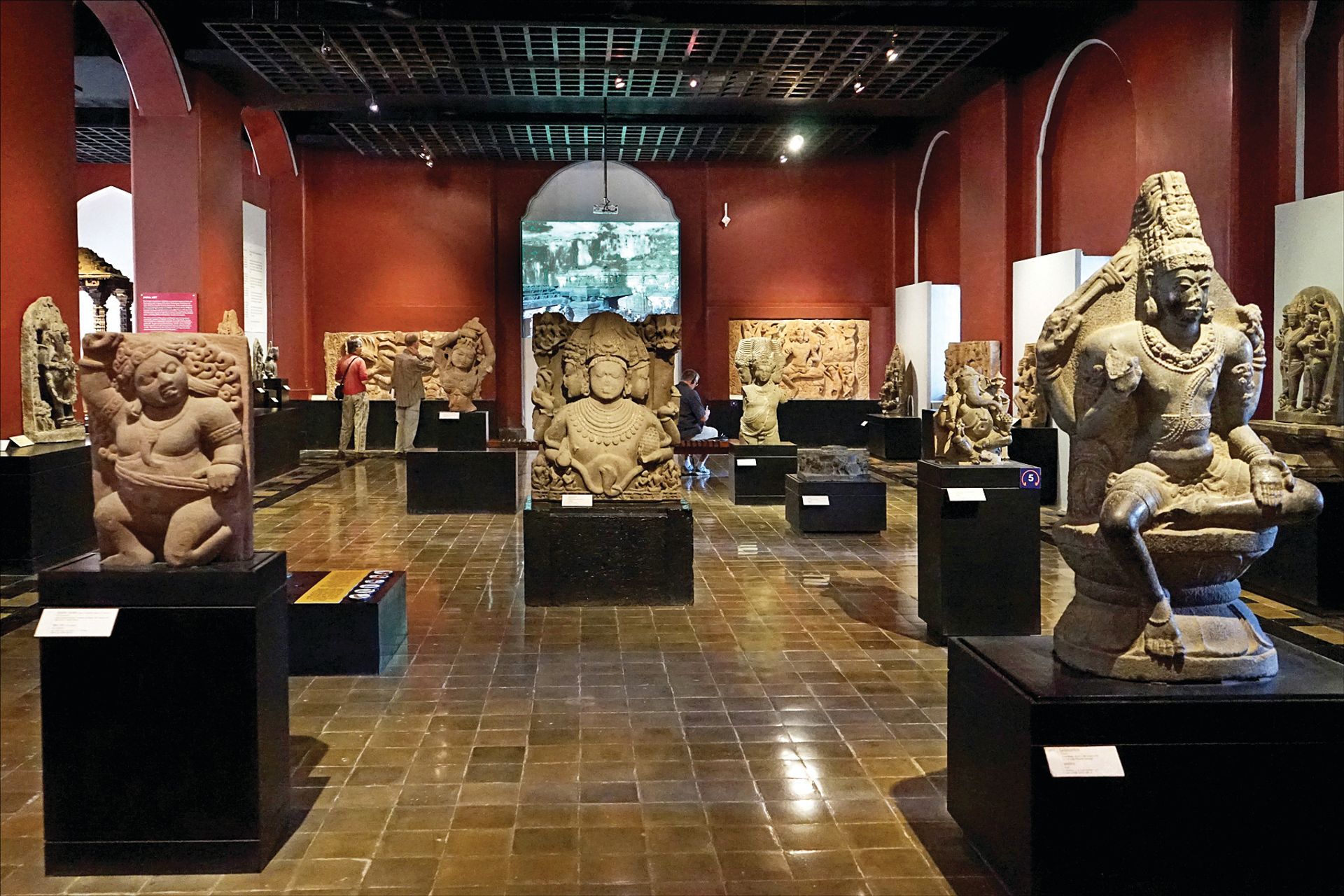India’s great museums have a reputation for being in a moribund state, the victims of decades of political apathy. In recent years, however, three institutions in particular have been rejuvenated by determined directors: Mumbai’s Chhatrapati Shivaji Maharaj Vastu Sangrahalaya (CSMVS), Dr Bhau Daji Lad Mumbai City Museum (BDL) and the National Museum in New Delhi. But the institution’s modernisation could be checked in the new political climate after last year’s election victory by the right-wing Bharatiya Janata Party (BJP).
The CSMVS, which opened in 1922, is home to a 50,000-strong collection. Under the leadership of Sabyasachi Mukherjee, who is a member of the Bizot Group of museum directors, the Mumbai museum has hosted loan exhibitions ranging from Persian art to Flemish paintings, working with London’s British Museum, New York’s Metropolitan Museum of Art, the Los Angeles County Museum of Art and the Royal Museum of Fine Arts Antwerp among others. The British Museum’s outgoing director Neil MacGregor plans to become one of its advisers, and in 2016 the CSMVS intends to stage an exhibition, organised with the British Museum, on India and the world.
New Delhi’s National Museum, which has a collection representing 5,000 years of Indian art, has flourished under the directorship of Venu Vasudevan, who arrived in 2013. He has overseen the refurbishment of three major galleries, corrected signage and texts, added a garden café and established an outreach department among other improvements. Highlights include bringing the exhibition The Body in Indian Art, from the Palais des Beaux-Arts (Bozar) in Brussels; this involved borrowing more than 200 works from 36 museums, archaeological institutes and private collections, and gaining the co-operation of museums run by different state governments, as well as the ministry of culture and the ministry of external affairs.
Public-private partnership
Meanwhile, the BDL has become a jewel of the Indian art scene. Formerly called the Victoria and Albert Museum, the building lay dilapidated and the collection neglected until 2003 when Tasneem Zakaria Mehta, the vice-chairman of the Indian National Trust for Art and Cultural Heritage (Intach), led a unique public-private partnership with the Municipal Corporation of Greater Mumbai (MCGM), the Jamnalal Bajaj Foundation and Intach. Mumbai’s mayor became the museum chairman while Mehta served as an honorary director. Importantly, as a managing trustee and equal partner, she has the autonomy to raise funds and establish partnerships.
The 19th-century building has been carefully restored and, since 2010, Mehta has invited contemporary Indian artists to engage with the museum’s collection. It has also worked with London’s Victoria and Albert Museum to stage two exhibitions, as well as hosting the BMW Guggenheim Lab.
Just when it seemed that authorities had finally come to support museum reform, the BJP’s landslide election victory of 2014 saw its leader Narendra Modi become India’s prime minister. While Modi promises to purge corruption and cut red tape, the new political climate has emboldened Hindu fundamentalists keen on cultural censorship.

Directors under fire
In 2014, Mehta unveiled an ambitious expansion plan for a new, 120,000 sq. ft wing at the BDL that will include galleries, a learning centre and research facilities. But political machinations threaten her grand vision. In March, trouble began when India’s prestigious Lakmé Fashion Week finale at the museum was abruptly moved after alleged threats from a local right-leaning political group. Shortly after, taking issue with the museum’s expansion plan that would demolish a playground, the municipal authority passed a proposal to revoke the tripartite agreement and Mehta was put on six-month notice.
Meanwhile, the modernisation of the National Museum may suffer a setback as Vasudevan was unexpectedly transferred to the sports ministry in May, in a move that apparently caught even the minister of culture, Mahesh Sharma, unawares. Those in the art scene’s inner circles suspect that the transfer was triggered by the director’s refusal to lend Buddha’s relics for a religious function attended by Modi. The Mumbai-based curator Girish Shahane says: “No museum director worth his salt would permit the shifting of a precious and delicate artefact without weeks of planning and the assurance of a secure, climate-controlled environment at its destination. For doing his job, and denying Modi a photo op in the process, Vasudevan’s been shown the door.”
The National Museum’s recent exhibition Nauras: the Many Arts of the Deccan (27 January-20 March), a collaboration with the non-profit arts organisation Aesthetics Project, showed how the dynasty fostered a cosmopolitan culture over a period of almost 400 years. The Sultanates were known for their cultural tolerance. The show illustrates the power of India’s museums to present historical evidence of harmonious syncretism and co-operation between communities. This narrative naturally comes into conflict with the chauvinist sentiments of Hindu fundamentalists.
The reform of the BDL and National Museum have shown the right wing a glimpse of their potential influence. Their supporters hope the government will allow modernisation to continue. But some fear that these shining examples among India’s museums will silently slide back into a state of neglect or, worse, be used as tools of religious propaganda.

